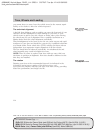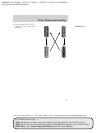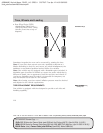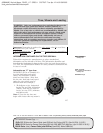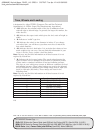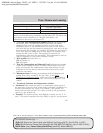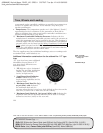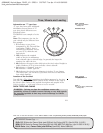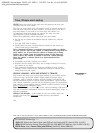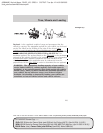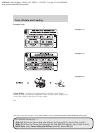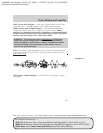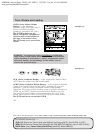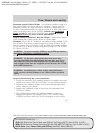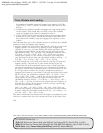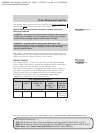
JOBNAME: No Job Name PAGE: 122 SESS: 1 OUTPUT: Tue Apr 12 14:52:56 2005
/ford_pdm/ford/own2002/mbs/mpdiff
NOTE: Snow tires must be the same size and grade as the tires you
currently have on your vehicle.
The tires on your vehicle have all weather treads to provide traction in
rain and snow. However, in some climates, you may need to use snow
tires and chains. If you need to use snow tires and chains, it is
recommended that steel wheels are used of the same size and
specifications as those originally installed.
Follow these guidelines when using snow tires and chains:
• Do not use tire chains on aluminum wheels. Chains may chip the
wheels.
• Use only SAE Class S chains.
• Install chains securely, verifying that the chains do not touch any
wiring, brake lines or fuel lines.
Drive cautiously. Ensure you obtain the proper cables or chains
for you vehicle. Test fit the cables or chains before using them in
snow and/or ice. If you hear the cables or chains rub or bang
against the vehicle, stop and retighten them. If this does not
work, remove the cables or chains to prevent vehicle damage.
Have the cables or chains fitted by a professional before
proceeding.
• If possible, avoid fully loading your vehicle.
• Remove the tire chains when they are no longer needed. Do not use
tire chains on dry roads.
• The suspension insulation and bumpers will help prevent vehicle
damage. Do not remove these components from your vehicle when
using snow tires and chains.
VEHICLE LOADING – WITH AND WITHOUT A TRAILER
This section will guide you in the proper loading of your vehicle and/or
trailer, to keep your loaded vehicle weight within its design rating
capability, with or without a trailer. Properly loading your vehicle will
provide maximum return of vehicle design performance. Before loading
your vehicle, familiarize yourself with the following terms for determining
your vehicle’s weight ratings, with or without a trailer, from the vehicle’s
Safety Compliance Certification
Label:
Base Curb Weight – is the weight of the vehicle including a full tank of
fuel and all standard equipment. It does not include passengers, cargo, or
optional equipment.
Vehicle Curb Weight – is the weight of your new vehicle when you
picked it up from your authorized dealer plus any aftermarket
equipment.
CIMS #1355516
com_load-label-def
itdseq=160
DIFF-MARKED Review Copy ——
(OLD=2005 B-Series fus Owners Guide (post-2002-fmt) 2nd Printing (#24721) (Nov-24-2004 11:18:53))
(NEW=2006 B-Series fus Owners Guide (post-2002-fmt) 2006 MBS CNE (#NoEntry) (Apr-12-2005 14:48:18))
2006 B-Series (mbs), Owners Guide (post-2002-fmt) (own2002), Market: USA (fus)
PAGE: 122 OP: root EDIT SESSION: 1 DATE: APR 12 2005 at 14:52
JOB: @ibm2/ford_pdm/CLS_ford/GRP_own2002/JOB_mbs/DIV_mpdiff
Tires, Wheels and Loading
122



